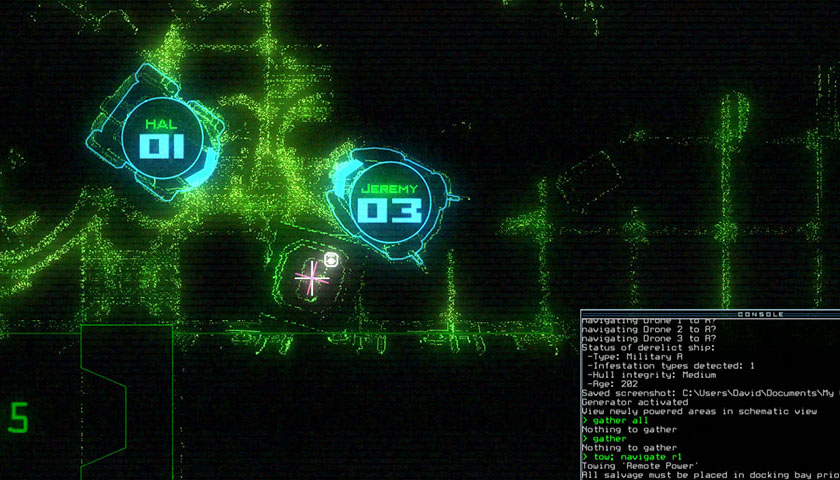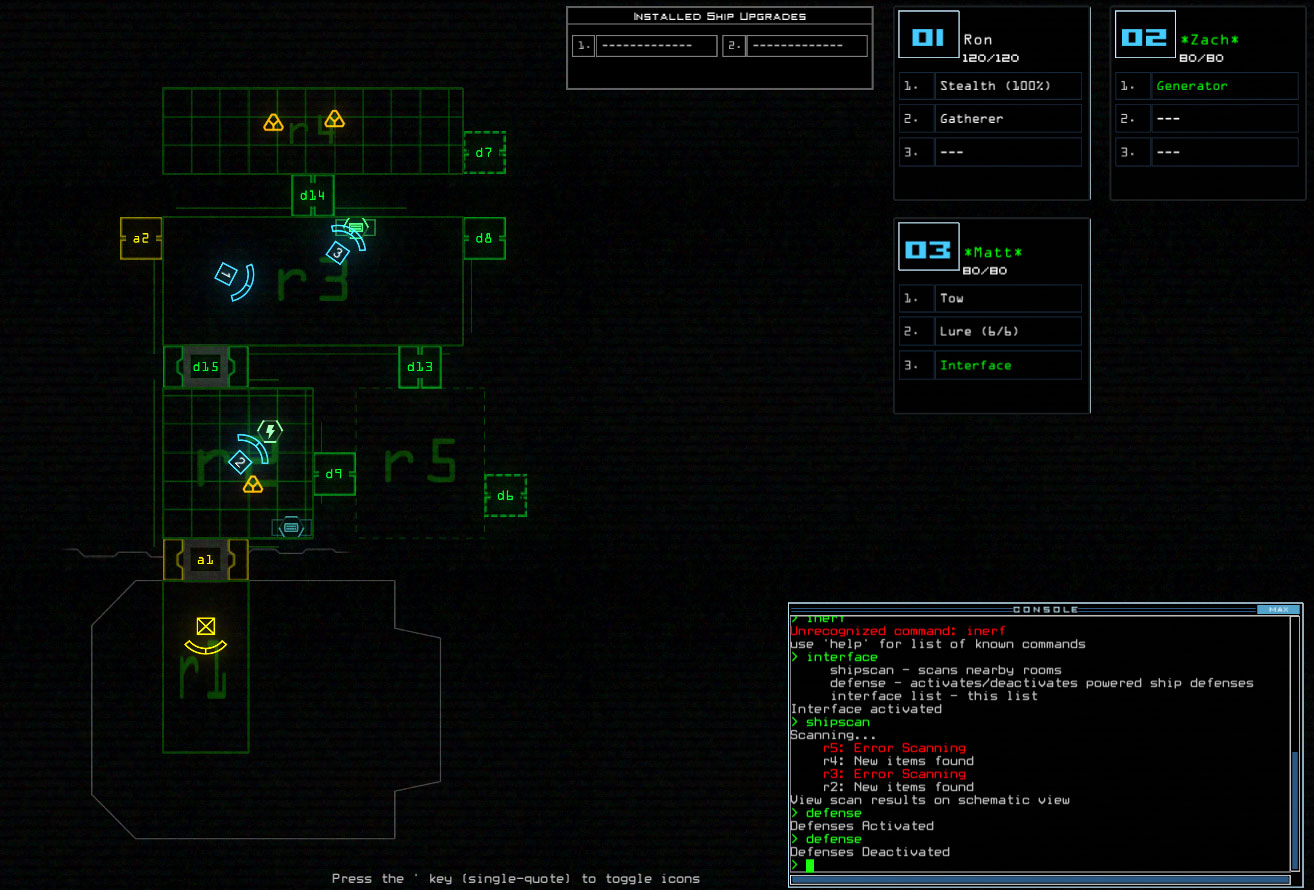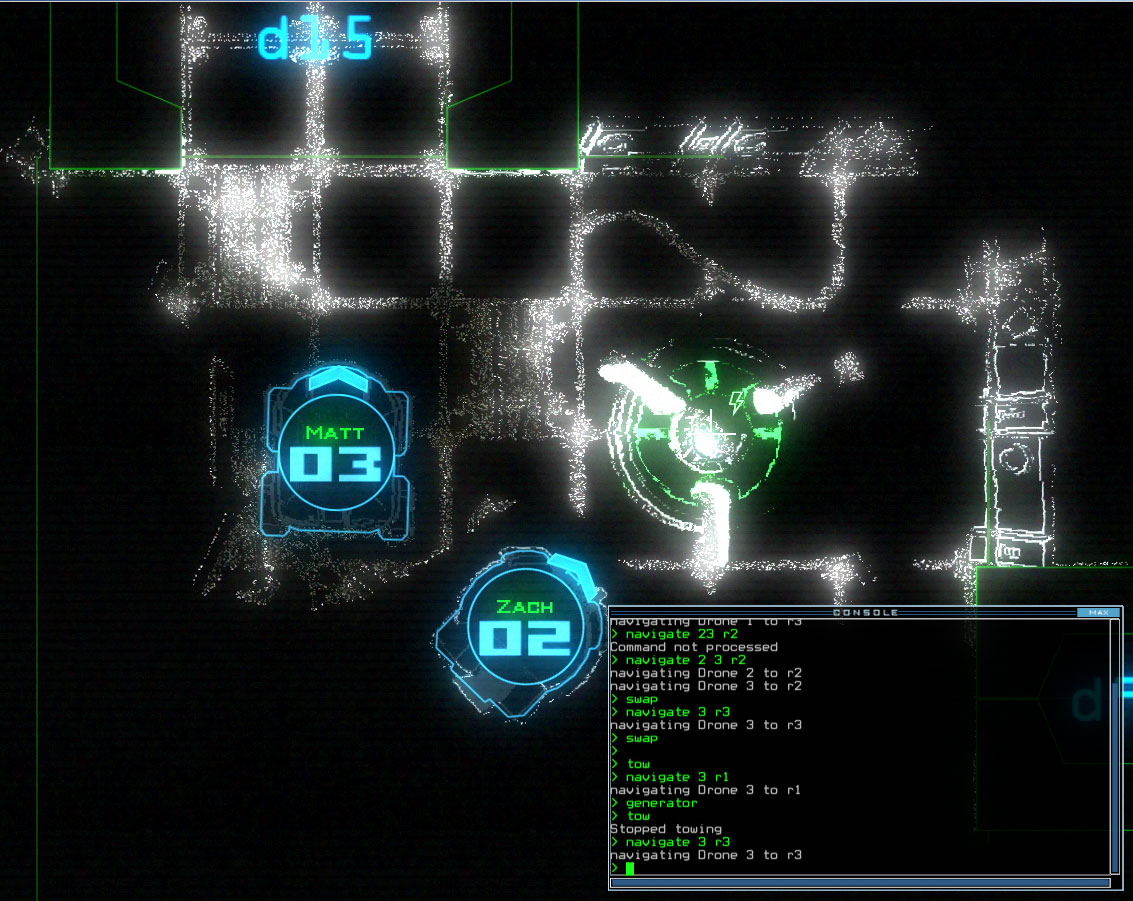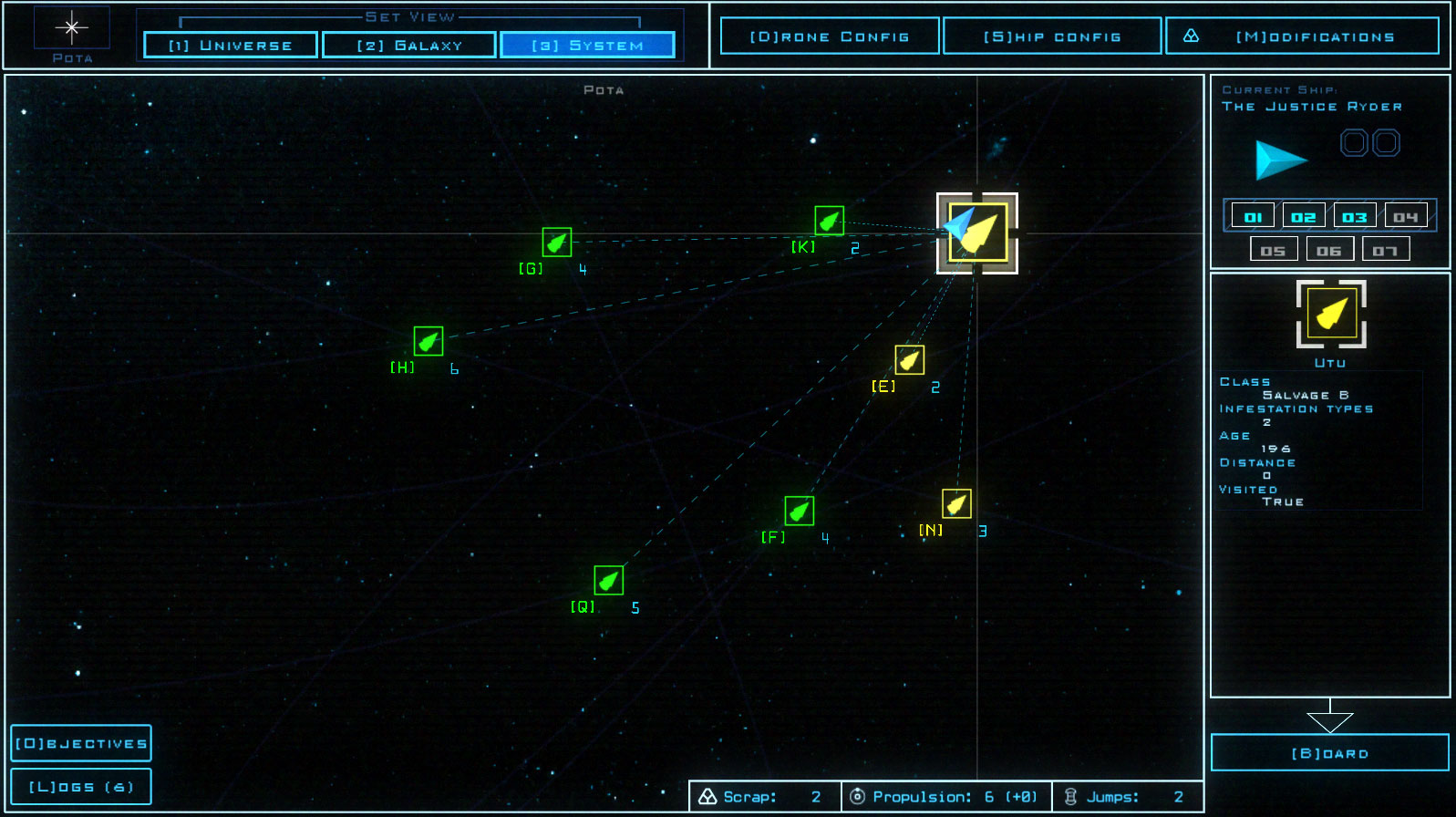Duskers
Everyone, everyone, else in the galaxy seems to be dead. You've got only your ship and a few remotely operated drones. You must use them to explore dangerous derelict ships and stations, looting scraps to survive. And if you survive, maybe find out what happened, and maybe find someone else who survived.

The atmosphere is pitch-black cold future-retro tech tomb filtered through a glitching CRT terminal. Your tools are your drones and the attachments you find for them: generators, stealth units, motion sensors, maybe even a gatling gun. But don't be fooled, you're not going to fight your way through this game: These are tools, not weapons. Your best move is to avoid enemies, to use your tools to gain the information you need to make your next move: which door to breach, where to next leapfrog your generator-drone, when to cautiously use your stealth drone to sniff out the next corridor.

There's never one answer for all situations. And as soon as you complete the early game and believe you've got a safe procedure figured out, something goes wrong. A door jams, your a motion tracker upgrade dies, you slip up and a drone gets killed. Worse, as you proceed into further sectors, more goes wrong. Your transporter lock starts to fade, an asteroid is incoming that will destroy the outpost you're exploring in six minutes, and you've just realized that swarms of biological enemies can sneak around doors. How do you clear the room to tow your drone back to safety? Or do you just leave it? You’ve got a toolkit, and the game follows rules, but then you realize that a tool in your toolkit can be taken away from you at any time, and a rule might be broken by a change in the environment.

You must operate with a set of flexible contingencies and overlapping tool-roles so that if any one part goes wrong, you can still pull back and recover. You can't do perfect clears of every derelict every time. Sometimes the winning answer may be to retreat. Space is dangerous.
This is a tactical squad-based space derelict exploration game - and I'm glad that combat and guns don't take over like they might in a more obvious approach to this genre. Having a gun is just one tool in your kit, useful to eliminate certain enemies but by no means a guarantee of safety against all. There are other tools for eliminating threats, and it often works best to use tools together to execute small operations.
In one session I cleared hostiles by putting one drone on generator-duty to power door control while a second held position in an adjacent corridor with a motion tracker to keep tabs on enemy positioning. I opened a series of doors, following enemy movement with the tracker, waiting until they entered the room with an airlock. Seal the doors, blow the airlock! Now I’ve secured half of the derelict for plundering (while being mindful to close the airlock again before the interior was flooded with radiation).
Here's a sample drone setup:

Drone 1, "Ron", is my pointman. I have no motion tracker so the stealth ability must be my exploration tool. Stealth lets Ron explore rooms with enemies so long as he doesn't use any other systems or run out of stealth charge. I'm not totally certain that stealth works on organic hostiles (edit: it does, but this may be open to change), so I'm pretty about exploration. He's also got a gatherer upgrade for collecting scrap and fuel, pretty straightforward and totally essential for acquiring the resources necessary to repair and upgrade between missions. If I found a weapon system or shield, I'd give it to Ron so he'd have an 'out' if things went wrong.
Drone 2, "Zach", is on generator duty. Just park him on a power nodes to control doors and airlocks. It's not a glamorous job, but it's one that must be done.
Drone 3, "Matt" is my support drone (they're not all male names, by the way, just luck of the draw here). If I had a motion tracker, he'd be using it to spot Ron's advance into new rooms. Here I was lucky enough to find an interface which lets me access computers to scan for extra junk and control the ship defense systems. It is important to remember that defense systems will kill enemies AND your drones. In a past game session I got sloppy and walked two of my drones into defense systems covering two unexplored rooms, then lost the other two drones to swarms of organic hostiles that somehow got through the doors I swear were locked (turns out they can use vents to travel between rooms). Matt also has a tow, which can be used to recover knocked-out drones and loot ship upgrades. One example of a ship upgrade is an at-distance generator ability which would allow me to power two points at once or give Zach something more interesting to do. The lure upgrade can be dropped to attract organic swarms (and apparently other hostiles, though with less effect), though I hadn’t managed to use it without dying yet in this playthrough.
While piloting an individual drone, the game looks a bit like this:

I'm really getting into the aesthetics, it's like a crappy LIDAR feed from a robot exploring the bottom of the Chernobyl reactor with a vector map overlay. You can never really see things as they are, the details emerge from the shimmering noise, reminding you that your perception of the world is always a construct transmitted from remote drones. And their cameras are just one more thing that can break in a stroke of entropy.
Here's the overworld map:

The strategic view reminds me a bit of the game FTL - you travel from derelict to derelict collecting scrap, which can be used as currency to repair and upgrade your drones, and two types of fuel, one lets you travel in a system, the other lets you jump to a new sector. There's even one higher level map level in which you can use stargates to jump between galaxies but I have no idea how that fits into the big picture yet.
I love the super bleak overall atmosphere of the game. It's an everyone is dead and cold tumbling wrecks in dark places between the stars space-loneliness simulator. And that's a lovely thing indeed. Duskers simply demands to be played with a dark ambient space-drone/noise soundtrack.
The user interface seems strange at first but upon reflection is a brilliant and considered design decision. Yes, it's keyboard only. And my first assumption was that this was straightforward roguelike design conservatism and it completely annoyed me at first. However the command line interface turned out to be extremely helpful at letting me know on-screen what I needed to type to do anything, and after an hour of dealing with it, I wasn't annoyed anymore. In fact, I came around to the idea that it's absolutely fitting to switch between typing stuff into a slightly janky console and performing manual control of one bot at a time - it's what you'd be dealing with as the sole survivor drone operator in the game's scenario, isn't it? The means of input IS the game, it IS the atmosphere of the game. If Duskers had a polished mouse-driven interface I'd probably try to play it like a twitch RTS rather than being careful and cautious about drone placement, order of operations, and considered advancement through the derelicts. So in addition to supporting the mechanics and the flavour, the command line interface signals the correct way for a player to approach playing the game!
I need to play more of this. With some fairly successful drone tactics down, I want to find out what is going on in the overworld. Duskers elegant ramps up difficulty as you proceed by leading you to aspire to higher level goals that require doing some really careful play with the low-level mechanics of the game. It's not enough to simply loot derelicts and survive. You must clear a ship of enemies, leave no radiation, commandeer the ship, then take it to a science outpost to scan it, then ... I have no idea.
I need to find out.
Return to blog index